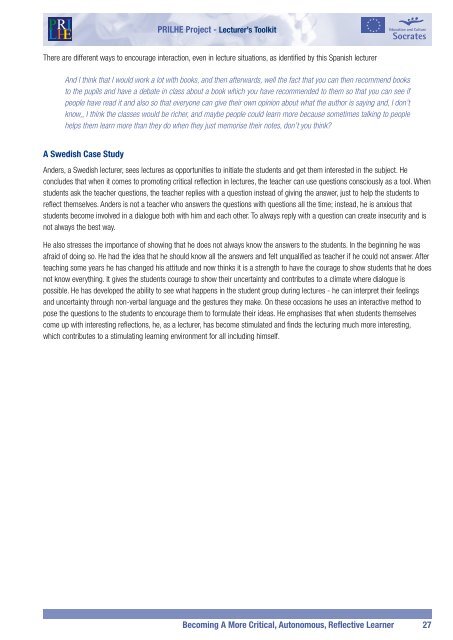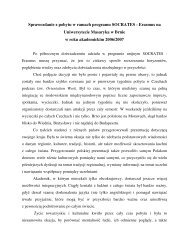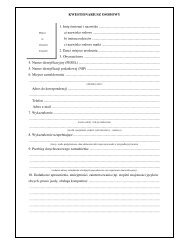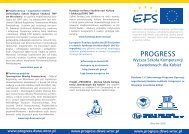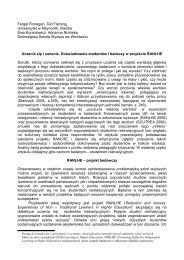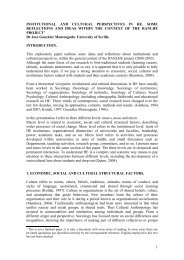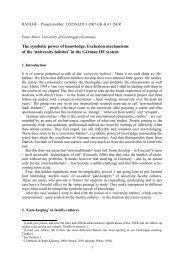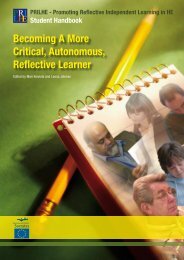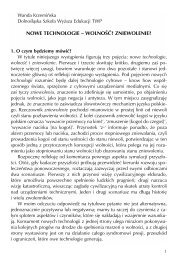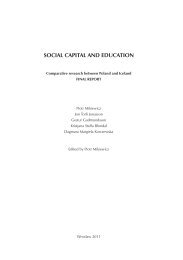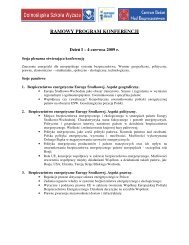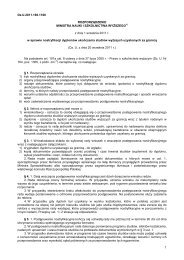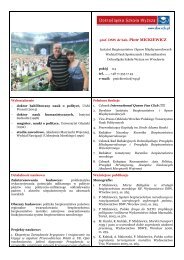Becoming A More Critical, Autonomous, Reflective Learner
Becoming A More Critical, Autonomous, Reflective Learner
Becoming A More Critical, Autonomous, Reflective Learner
You also want an ePaper? Increase the reach of your titles
YUMPU automatically turns print PDFs into web optimized ePapers that Google loves.
PRILHE Project - Lecturer’s Toolkit<br />
There are different ways to encourage interaction, even in lecture situations, as identified by this Spanish lecturer<br />
And I think that I would work a lot with books, and then afterwards, well the fact that you can then recommend books<br />
to the pupils and have a debate in class about a book which you have recommended to them so that you can see if<br />
people have read it and also so that everyone can give their own opinion about what the author is saying and, I don’t<br />
know,, I think the classes would be richer, and maybe people could learn more because sometimes talking to people<br />
helps them learn more than they do when they just memorise their notes, don’t you think<br />
A Swedish Case Study<br />
Anders, a Swedish lecturer, sees lectures as opportunities to initiate the students and get them interested in the subject. He<br />
concludes that when it comes to promoting critical reflection in lectures, the teacher can use questions consciously as a tool. When<br />
students ask the teacher questions, the teacher replies with a question instead of giving the answer, just to help the students to<br />
reflect themselves. Anders is not a teacher who answers the questions with questions all the time; instead, he is anxious that<br />
students become involved in a dialogue both with him and each other. To always reply with a question can create insecurity and is<br />
not always the best way.<br />
He also stresses the importance of showing that he does not always know the answers to the students. In the beginning he was<br />
afraid of doing so. He had the idea that he should know all the answers and felt unqualified as teacher if he could not answer. After<br />
teaching some years he has changed his attitude and now thinks it is a strength to have the courage to show students that he does<br />
not know everything. It gives the students courage to show their uncertainty and contributes to a climate where dialogue is<br />
possible. He has developed the ability to see what happens in the student group during lectures - he can interpret their feelings<br />
and uncertainty through non-verbal language and the gestures they make. On these occasions he uses an interactive method to<br />
pose the questions to the students to encourage them to formulate their ideas. He emphasises that when students themselves<br />
come up with interesting reflections, he, as a lecturer, has become stimulated and finds the lecturing much more interesting,<br />
which contributes to a stimulating learning environment for all including himself.<br />
<strong>Becoming</strong> A <strong>More</strong> <strong>Critical</strong>, <strong>Autonomous</strong>, <strong>Reflective</strong> <strong>Learner</strong> 27


